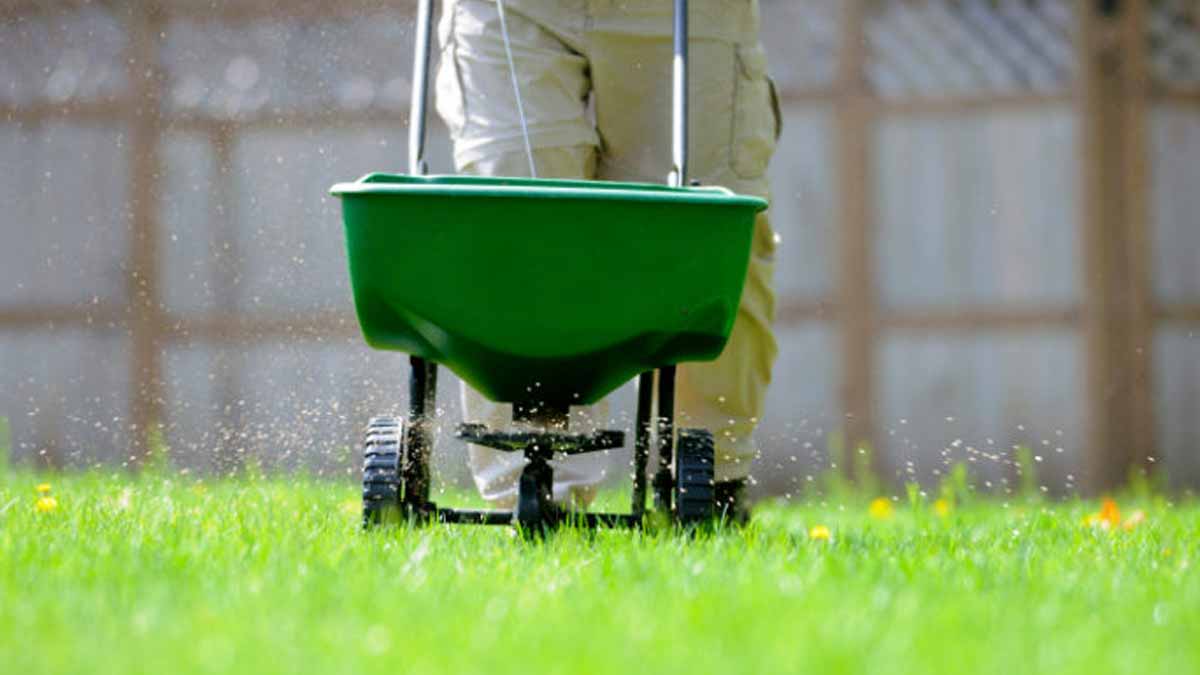A tired yard can bounce back fast when timing and steps align, and fall delivers both. Cooler air steadies growth while warm soil wakes seeds, so progress comes quickly and holds. Start with clear goals, simple tools, and steady watering, because those choices shape results. Revive your lawn without guesswork, and you’ll head into winter with new shoots already anchored. Keep a few details close, then move with purpose, since each pass sets up thicker spring color.
Why your lawn responds best to early fall overseeding
Heat, traffic, weeds, pests, and disease thin turf over summer; bare patches follow. Overseeding fills gaps and thickens existing grass, so the surface knits again and shades soil. Because roots spread while nights cool, seedlings face less stress. Growth steadies, and color deepens.
Cool-season grasses stay green through winter, which supports steady cover while soil remains warm. That pairing speeds germination. Warm-season yards still benefit when owners overseed with cool-season types for winter color, while they keep base turf intact. As air cools, soil warmth does the heavy lifting.
Timing matters for every lawn mix. Warm-season base turf prefers late spring to early summer when soil sits above 65°F, because heat drives quick establishment. Overseed once a year; yet, when turf is very thin, repeat in spring and fall. That cadence helps close gaps and blocks opportunistic weeds.
Pick the right grass seed for lasting results
Match seed to your lawn microclimate, since sun, shade, and traffic vary by zone and path. Choose the same species for a seamless look or use a compatible blend for resilience. Texture, blade width, and color should align, so the yard reads as one canvas.
For winter color on warm-season bases, tall fescue, perennial ryegrass, or Kentucky bluegrass work well. Each brings fast germination and steady cool-weather growth. Blends resist disease better, while single types keep appearance consistent. Ask a local garden center for help if the original species is unclear.
Think beyond species and weigh maintenance. Fast growers ask for more mowing, while deep-rooting types sip less water later. Seed tags list purity and germination; better numbers save time. Pick certified bags, then buy enough to cover the target area evenly, because thin coverage invites weeds back.
Prep the lawn surface so seeds meet soil
Scalp lightly to open the canopy, setting the mower to 1–2 inches; bag clippings to prevent a mat. Shorter stubble lets sunlight reach soil and helps seed settle. Uniform height also smooths spreading passes, since wheels track clean lines and edges. Start tidy, so every seed counts.
Rake out debris, leaves, and twigs, then de-thatch where straw-like layers block water. That thin crust starves seedlings, while clean soil breathes. Loosen the top layer with firm strokes, which improves contact. A roughened surface cradles seed, so moisture lingers and coats hulls during early sprout stages.
Topdress with about ¼ inch of enriched soil or compost to boost early nutrition and hold moisture. If traffic compacted the yard, consider core aeration to open channels for air, water, and nutrients. Those holes guide roots downward. Your lawn establishes faster when roots find paths instead of hardpan.
Spread seed and feed with care, not haste
Load a broadcast or drop spreader, then follow your mowing pattern to ensure full coverage. Check the label for rate per 1,000 square feet, because too little leaves gaps and too much crowds seedlings. Overlap wheel tracks slightly, while you keep a steady pace across every lane.
Make a second perpendicular pass if the bag suggests it, which evens distribution and hides stripes. Lightly rake to pull seed into grooves for better contact. Avoid burying it deep, since light aids germination for many species. Seed should touch soil, yet remain near the surface for warmth.
Use the spreader again for a starter fertilizer made for new grass. Skip weed-and-feed because pre-emergents can kill seedlings. When seed already includes fertilizer, follow that program and do not double up. A mild formulation drives root growth first, so shoots handle stress and the lawn thickens without surge growth.
Water, protect, and let seedlings establish
Soak the area once after seeding, then mist lightly one or two times daily to keep soil moist. Morning sessions work best because heat later causes evaporation, while evening baths may invite fungus. Moist, not soggy, is the rule; puddles float seed and leave gaps you’ll notice later.
Shield tender shoots from heavy steps by rerouting play and foot paths for a few weeks. Post small markers if needed, since simple cues prevent damage. Hold off on mowing until new blades match existing height, which signals roots can handle stress. Sharp blades trim cleanly and avoid tearing.
Reduce watering as roots deepen, while you watch color and bounce after each step. Resume your normal routine once coverage evens out and patches vanish. A gentle feed later supports density, yet patience matters more. Because steady habits protect time and money, the lawn rewards you with thick spring growth.
Set the stage now for thick spring growth ahead
Small choices today echo into spring because seedlings set roots before frost. Follow the steps in order, keep moisture steady, and avoid shortcuts that seem fast but cost density. Stick to clear rates and gentle mowing, and your lawn will carry winter color while building a stronger base for next season.
